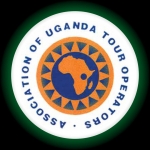
The lugbara tribe of uganda
The lugbara tribe of Uganda
The Lugbara is tribe in Uganda that sits on the common border between Uganda and the Democratic Republic of Congo. Though its majority of the population is more to the Congo boarder side. Others are also found in South Sudan in Morobo county. They are located in the West-Nile regions of Uganda.
They occupy the regions of Maracha, Yumbe, Arua, Terego, Vurra and Aringa. The Lugbara cultural symbol is the Leopard. This shows how fearless they are. They speak Lugbara, a central Sudanic language which is similar to the one spoken by the Madi. They also share similar cultural ways. The tribes that have a similar dialect are Madi and the Kakwa.
ORIGIN
The Lugbara are traced from Rajat in Juba region and Boar in Bari. Most pf the Lugbara traditions regarding their origins of Gods creation of Meme and Universe. The Lugbrara were known as Madi before and them acquiring Lugbrara came when the Khartoum Arab slaves encroached them way back in the late 19th Century.
They were believed to be first to human beings in Gboro-Gboro male and female who were believed to be super human. Other traditions talk about some Meme whose would was believed to have been filled with living things by God in the world. It is also believed that a gazelle formulated an opening in the Memes womb by tearing it apart with its hoof and all the worldly creatures came out, it is also believed that man and woman came last out.
 Arube who was a boy and Ondu who was a girl were twins, they were also known as the first human beings to come. They are believed to have been just as ordinary as the the persons who born them. It is said that Meme died immediately after giving birth.
Arube who was a boy and Ondu who was a girl were twins, they were also known as the first human beings to come. They are believed to have been just as ordinary as the the persons who born them. It is said that Meme died immediately after giving birth.
The twins grew up and married to each other, they produced children who multiplied and formed several clans. The clans formed include; Jokodora, Mutalema, Telebyere and Lebenyere clans. Even though most of the Lugbara also believed to have come from Jaki whose sons disappeared from Mountain Liru in Sudan.
The Rubu claimed descent from the Aroba who is believed to have migrated from Mountain Liru to found the Otrabu-Rubu Yia clans. With all the beliefs they had, the Lugbara are a combination of the Madi and the Bari.
POLITICAL SET-UP
The Lugbara were organized in chiefdoms-based communities, they did not have kings neither kingdoms ruling them like other tribes in Uganda, mostly the Bantu groups. The Lugbara were led by Chiefs only. They formed friendly alliances with the neighboring chiefdoms so that when time of war came, they had security around the prevent the attacks.
The Lugbara were strong and tall people who did not even have an army or even soldiers in the chiefdoms. The able-bodied men had the responsibility of protecting the villages from enemies, this was not a permanent duty because it was out of good will.
The Lugbara also had a way of solving matters through the lineage of clan heads. For the affairs of the clan, the cases were managed by the lineage of clan heads as for the minor cases were managed by the lineage heads. Serious cases include; killing of a relative, adultery, wizards, witches and sorcery.
The Lineage court comprised of all the family heads and was led by the Lineage heads. The lineage heads made the final verdict of the matter.
 Clan court was a higher court that comprised of all Lineage heads and some wealthy men of the clans who were able. Court proceedings were carried out under a big tree in the compound and allowed no woman or child be near or even eavesdrop on the proceedings.
Clan court was a higher court that comprised of all Lineage heads and some wealthy men of the clans who were able. Court proceedings were carried out under a big tree in the compound and allowed no woman or child be near or even eavesdrop on the proceedings.
When there was succession to the throne, there was an honorable occasion that was organized and must be attended to by all notables of the clan.
The most senior of the chiefs (Opi) presented the new chief (Opi) with an “Anderika”, it was a chiefly stool that the new Opi was to sit on. After the new Opi sat on the stool, he was presented with a spear, bow and arrow, and a bracelet.
A congregation of Lineage chiefs would brief the new Opi with the guidelines of how he was to rule.
RELIGION
The Lugbara believed in a single demi God called “Adroa”, was also known as “Adro”. They believed that he formed the world with all its habitants.
There were two heroes that formed the Lugbara society. Under the “Adro”, there were two spiritual categories; The Lugbara believed they were spirits and Ancestors.
The Spirits /Adro referred to a source of power that scared away all human beings, they highly respected it because they were many forms of spirits with different powers over human beings. There were spirits of sickness or disaster, these were very many. It was believed that women diviners had contact with them.
There were spirits that inhabited the bodies and soul of the people. The spirit in the body are said to have left the body at death and resided in the forests with the future aspects of “adro”.
But now many Lugbaras are Catholics, Moslems and also Nubi.
MARRIAGE
When there were many tribal conflicts among the Lugbaras, courtship was never supported because they believed one would get angered and do harm to another who was of a different tribe that had attacked. When warfare was granted considerably, courtship was allowed because all were believed to be calm.
But before, parents arranged marriages for their children, they could even make marriage reservations for the children tending to get married to each other in future. The boy’s parents could take bride price to the girls’ parents when the time for marriage had come. Here after the couples could be customarily married.
The women who failed to give birth or even had possession of poisonous charms, those who practiced witchcraft to their men if noticed where divorced.
BURIAL
In the Lugbara tribe, when a chief died, no one was allowed to sorrow or even mourn before he was buried. This was because the Lugbara feared that when he heard them mourn, he would turn into a lion or leopard and kill all of them. They only wept quietly.
A bull was slaughtered and the dead Opi would be wrapped in its hide. Burial would be done in the middle of the night.
After burial, a sorrowful song was played and mourners would weep and dance at the same time. A backcloth tree would be planted near the grave. The deceased was buried facing the mountain Liru because they believed that it is where they came from.
The paternal relatives of the late chief (Opi) would give ‘Avuti” (death duty informs of a bull) to the chiefs on the maternal relatives.
ECONOMY
The Lugbara people were agriculturalists. They were subsistence farmers who se staple food was cassava. They also planted sorghum, legumes, pigeon peas and root crops. They also had chicken, goats, pigs and cattle, all these were brought in during their simple migration many years ago.
They also could get food through hunting of antelopes, rabbits, buffalos, bushbucks, squirrels and many more other animals for survival from hunger. This made them able hunters.
They also ate grasshoppers that were migrating, they ate fruits and roots of some wild plants to.
















